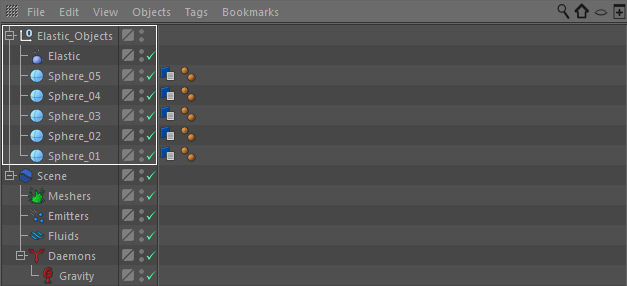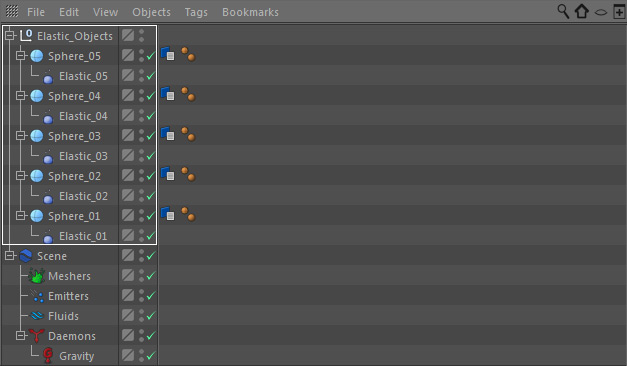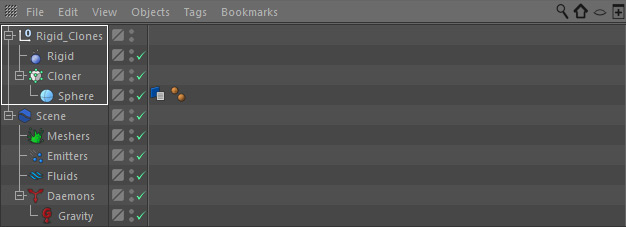Rigids and Elastics
Although rigids and elastics are represented through particles, they are not categorized as fluids, but as deformer:
- Both types apply vertex deformation and velocity from particles to attached objects.
- In order to achieve better results we recommend adding a "Volume" tag to the objects you want to turn into rigids/elastics. Do not apply "Collider" tags.
- The rigid/elastic deformer provide a "Resolution" parameter to create more or less particles.
- The objects' number of polygons also plays an important role: with high-res objects you normally get better results, e.g. fine wrinkles with cloth-like elastics.
Interactions With Liquids and Other Rigids/Elastics
Dyverso rigid and elastic particles are able to interact with a wide variety of other fluids and materials. For a full list please go to → "Material Interactions".
How to Apply Rigid & Elastic
To make RealFlow | Cinema 4D's rigid and elastic deformer work correctly a certain hierarchy is required:
Here, all spheres will be controlled by a common "Elastic" object. For "Rigid" the setup is exactly the the same.
In this example, every sphere has its own "Elastic" deformer to establish individual settings.
Using MoGraph Cloner
It is possible to create instances from a base object through a MoGraph cloner and turn these objects into rigid and elastics. Again, a certain hierarchy has to be maintained:
The deformer can be located above or below the "Cloner" node – the result will be the same.
For more information about RealFlow | Cinema 4D deformer and MoGraph cloner visit this page.
Particle Skinner
This helper allows you to transfer particle velocity and position data to objects. The "Particle Skinner' is already implemented in the "Rigid" and "Elastic" deformer and therefore not necessary anymore.



